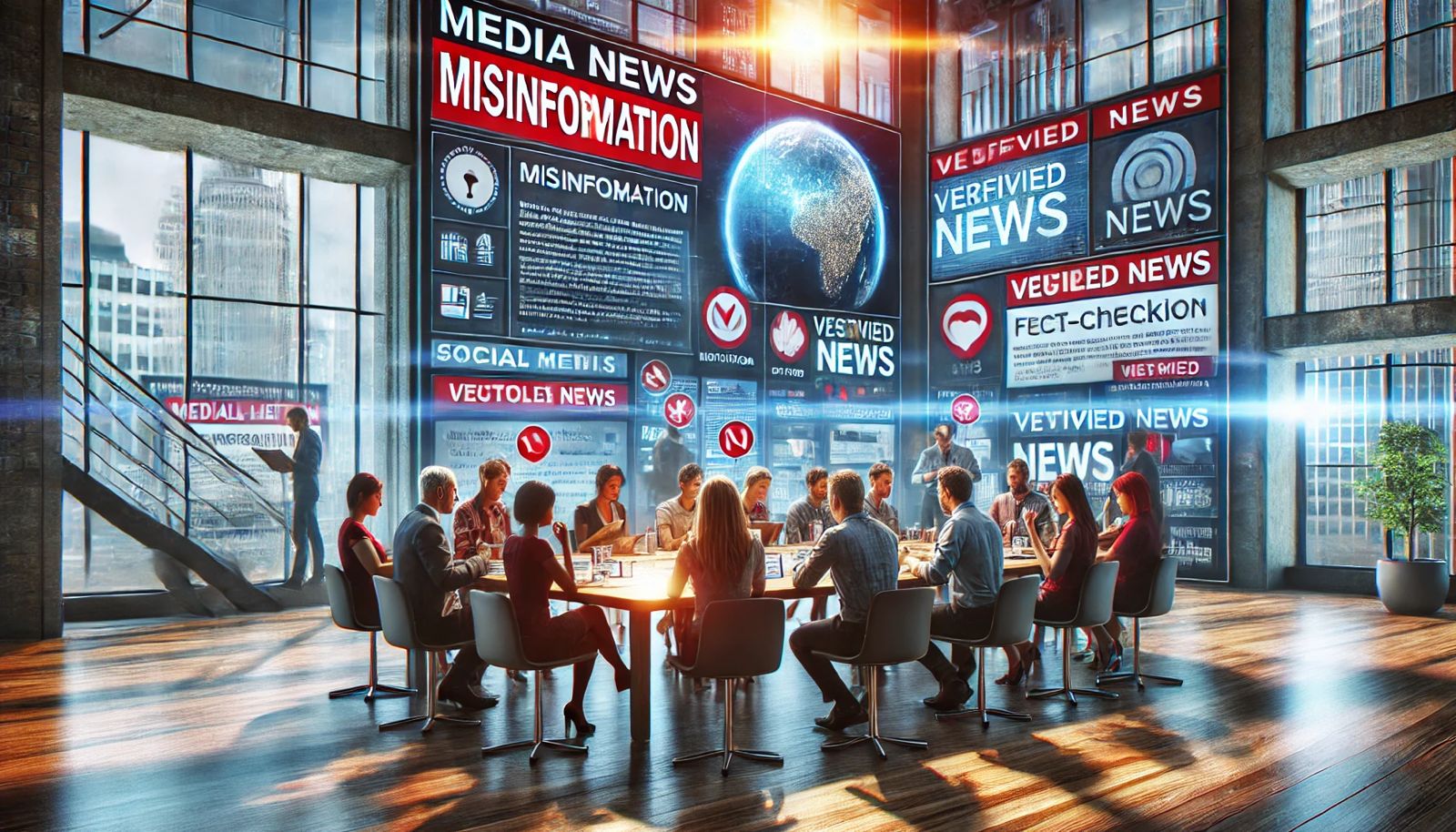Subscripe to be the first to know about our updates!

Why media and information literacy are essential in the age of disinformation
Sasha Havlicek, Daniel Dobrygowski
The ability to critically engage with information is more important than ever. From viral falsehoods and deepfakes to emotionally manipulative content designed to mislead or divide, the information environment has become increasingly complex and opaque.
In this context, media and information literacy have emerged as a global priority, recognized not only as a key individual skill set but also a foundational pillar for safeguarding democratic discourse, social cohesion and public trust.
Media and information literacy equips individuals with the tools to access, analyze, evaluate and create information responsibly, empowering them to navigate a digital ecosystem shaped by algorithmic curation, commercial incentives and evolving threats. Yet, its significance extends beyond personal empowerment.
As disinformation campaigns grow more sophisticated and pervasive, the need for a whole-of-society approach becomes clear, one that integrates media and information literacy into education systems, workplace training, public service messaging and digital platform design.
The latest report from the World Economic Forum’s Global Coalition for Digital Safety, Rethinking Media Literacy: A New Ecosystem Model for Information Integrity, introduces a holistic model for strengthening information integrity. It identifies multiple entry points for intervention and helps identify gaps in current efforts.
As generative AI and other technologies blur the lines between fact and fiction, the need for robust media and information literacy has never been greater
Media and information literacy – growing scope and urgency
Media and information literacy is no longer limited to traditional media literacy. It now encompasses digital, human rights, news, advertising, computer, privacy and artificial intelligence (AI) literacy. This broad approach is designed to equip individuals with the skills to access, analyze, evaluate and create information across platforms and formats.
As generative AI and other technologies blur the lines between fact and fiction, the need for robust media and information literacy has never been greater.
Despite its recognized importance, media and information literacy efforts remain fragmented. Most initiatives focus on youth and formal education, leaving significant gaps in adult and lifelong learning. There is also a lack of coordination, long-term evaluation and resources, particularly outside the education sector.
Information resilience mapping model
At the heart of this new model is the integration of two complementary conceptual frameworks: the disinformation lifecycle and the socio-ecological model.
By aligning these perspectives, the framework helps better map the current media and information literacy landscape, highlighting gaps, surfacing opportunities for engagement and enabling coordinated, scalable impact over time.
The socio-ecological model
The report draws on the socio-ecological model, which highlights how individual behaviours are embedded within and influenced by broader social systems. This model emphasizes a web of interrelated factors operating at multiple levels of society.
- Individual level: At the core of the model are individuals and their personal capacities. Skills such as critical thinking, emotional literacy, media discernment and digital navigation are central to how people interpret and engage with information.
- Interpersonal level: Families, friends, peers and mentors play a critical role in shaping information habits. Whether through forwarding messages or casual conversation, these interpersonal networks often serve as the first line of amplification or correction for false content.
- Community level: Schools, religious groups, local media outlets and civil society organizations help reinforce or resist disinformation narratives. Community norms, trust in local institutions and access to locally relevant media all influence whether individuals are exposed to diverse perspectives.
- Institutional level: Larger institutions, including educational systems, media companies and digital platforms, set the tone for the kinds of information produced, promoted or suppressed. Platform design, algorithmic incentives, journalistic standards and the resources allocated for media literacy all shape the information environment in which disinformation thrives.
- Policy level: National, subnational and international regulations define the legal and structural boundaries for action. These policies create the enabling conditions for systemic responses to disinformation.“
While media and information literacy are increasingly recognized as essential, current efforts are not fully adapted to the realities of the digital age.
The disinformation lifecycle
The other part of the model is the disinformation lifecycle on the x-axis. Each stage, from pre-creation to distribution and post-consumption, requires distinct and coordinated interventions to reduce both supply and demand.
- Pre-creation: This phase is shaped by cultural norms, public awareness and perceptions of accountability. These underlying conditions determine whether disinformation finds fertile ground or fails to take hold, regardless of the specific narrative.
- Creation: Focuses on the tools and conditions that enable the production of disinformation, particularly the ease with which high-impact content can be made. This challenge is amplified by the mass-market availability of generative AI, which accelerates the scale, precision and persuasiveness of false narratives.
- Distribution: Examines how platforms contribute to the spread and normalization of disinformation. It highlights the algorithmic and structural factors that shape what content is surfaced, amplified or ignored. Increasing transparency is critical for accountability.
- Consumption: Examines how individuals interact with information in their daily lives and how better habits can be cultivated. Interventions aim to promote critical engagement, reduce vulnerability to manipulation and empower users to challenge disinformation.
- Post-consumption: Addresses the longer-term impacts of disinformation on individuals and society. Because disinformers adapt quickly, responses must include resilience strategies: planning for persistent harms, supporting those affected and reinforcing systems to respond to evolving threats even after false content circulates.
Towards a coordinated response
While media and information literacy are increasingly recognized as essential, current efforts are not fully adapted to the realities of the digital age.
The information resilience mapping model offers a holistic framework for understanding and addressing disinformation, highlighting the need for coordinated, multi-level interventions that extend beyond individual education to include community, institutional and policy actions.
Source: World Economic Forum